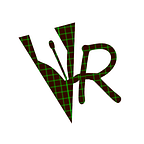Why VR companies need great technical writers
Virtual reality is a new frontier being explored by designers and developers everywhere. As with any new frontier, it is easy to become lost.
Designers and developers are searching for ways to utilize virtual reality to build applications, experiences, and more.
VR specific software is as new to developers as the VR industry is itself. There has been little time to establish concrete use cases, workflows, or knowledge bases to utilize these new tools.
Without the proper knowledge new tools may appear to be limited, hard to manage, or just plain useless. A developer working in the fast paced VR industry doesn’t have time to deal with poorly designed tools.
The designers of the tools themselves want nothing more than to create a community of developers.
The more power users a toolset has, the more opportunities for improvement available. And of course, the more users a toolset has the more money can be made.
How can a company cultivate a community of power users? With powerful documentation.
When learning a new technology, the first place developers go is the documentation. Online tutorials are great, but new technology has not been around long enough for much content to be created. Sooner or later tutorials aren’t going to answer a developer’s more granular questions.
The technology’s documentation is the first place new developers turn to in an effort to understand what it is they are working with. It is the responsibility of a technology’s documentation to teach users how to utilize the technology and to do so in as concise and engaging way as possible.
Technical documentation is written in as concise a way as possible to explain how a technology works.
In its effort to be concise, technical documentation can be inaccessible, intimidating, or downright infuriating for new users. There are powerful pieces of software lost to history whose greatest fault was a lack of user knowledge.
If a VR software company wants to stand a chance to retain users and build a community of power users, their documentation needs to educate and engage. If a company relies solely on users’ drives to learn they run the risk of losing users to competitors with an easier to understand solutions.
Why should a VR company have a strong technical writer on the team? User retention.
Engaging users with documentation improves retention.
The more engaging documentation is, the more likely users are to come back to learn more. Engagement builds trust and provides a sense of enjoyment whilst sifting through dry material.
Educating with documentation creates power users.
The more informative technical documentation is, the more likely users will be to come back to learn more. Where some technical documentation relies on explaining what each individual piece of a technology is, great documentation provides examples, use cases, and other educational content within the documentation.
The more information a technical writer can instil upon their readers, the higher likelihood the documentation becomes a trusted resource utilized on a frequent basis. A technical writer can build a community of power users through effective documentation.
Empowering users through documentation builds community.
Learning a new technology can be frustrating. Technical documentation is known for its dry content and lack of hand holding. In an effort to be concise technical writers spend little if any space on leading a user through the inner workings of a technology.
A good technical writer can lead users through a technical document. A great technical writer can empower users to dig deeper, learn more, and utilize a technology to its full extent.
Conciseness is the name of the game for technical writers, but being concise does not make it okay to leave users hanging.
Too much fluff and a user loses interest before they understand the technology. Too little and users become bogged down by disconnected information. A good technical writer can keep documentation concise whilst still educating, engaging, and empowering users.
The better your documentation is, the more likely your users are to stick around to learn more.
The more users you have, the more use cases for your technology will be discovered. The more use cases discovered, the more users you will find. The more users you find, the more chances your company has at making its mark in the VR industry.
In these early days of VR, it is paramount that we do our best to educate, empower, and engage the designers and developers interested in building the future. Technical writers are a powerful yet often forgotten force in driving user adoption and retention.
This post is for Day 26 of my 90 day VR experiment. Join me here for a daily dose of virtual reality design, gameplay, speculation, and most importantly: adventure.
